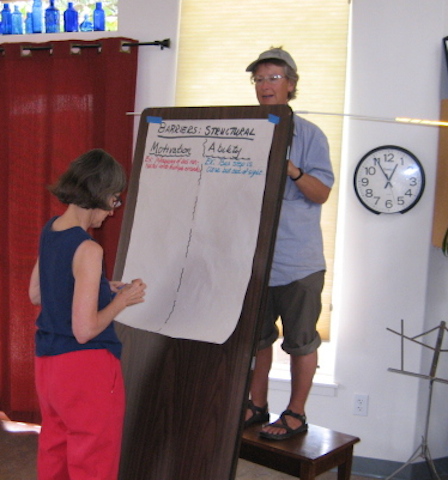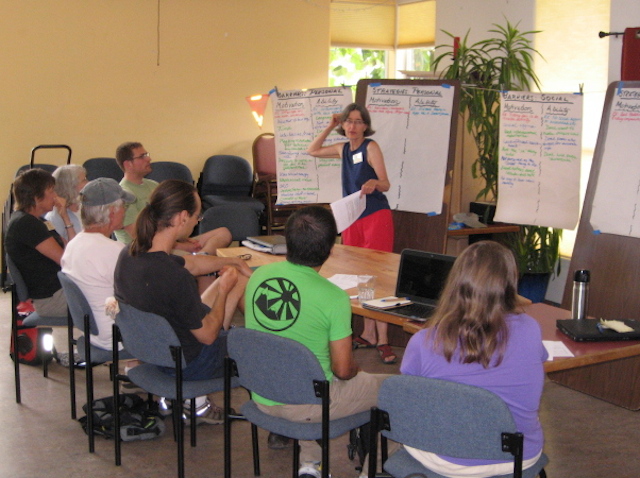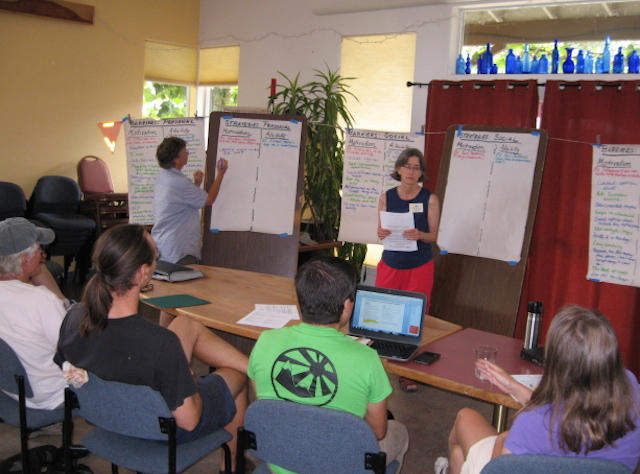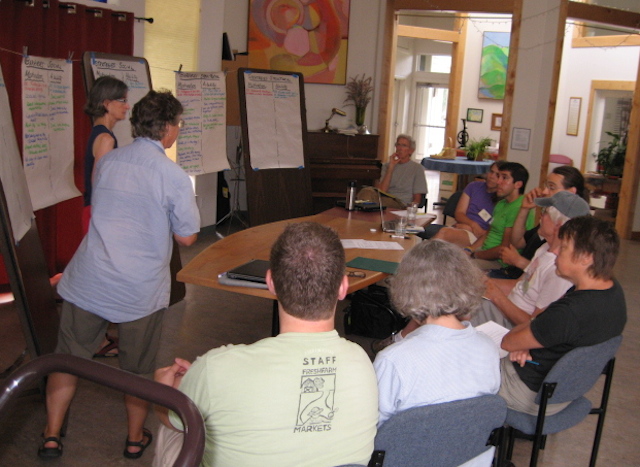Efforts to promote and maintain sustainability face the same challenges posed by any goal. What factors are most influential?
CoHo’s Sustainability Action Team has been using the InfluencerTM Model which is based on the premise that efforts to influence are more successful when multiple areas are covered (the model uses a 6-cell grid covering Motivation and Ability issues at Personal, Social, and Structural levels).
A session in August included both CoHoots and sustainability leaders from Corvallis.
Feedback from participants was generally positive.
- Did using the 6 cells help/hinder the overall idea generation process?
“It was extremely helpful and focused. – better than brainstorming.”
“I thought the same. It was good to have a system.”
Everyone agreed that they would like to use this process with another group.
- What was the impact of identifying barriers BEFORE actions?
“It was a good way to do it. I liked it. Barriers are really what you want to address. Sometimes people have solutions when they don’t have a problem!”
“I know that some barriers are more important and some strategies have more “sway” – looking for the biggest bang for the time/energy buck.”
For more info on the model, refer to the invitation sent to participants, which is included below the group photos.
The following invitation to the session describes the InfluencerTM Model….
Thanks for your interest in working with CoHo’s Sustainability Action Team on applying the InfluencerTM model to the topic of increasing bus ridership by CoHo residents.
The model we use at CoHo has been adapted from this book:
InfluencerTM: The New Science of Leading Change* by Joseph Grenny, Kerry Patterson, David Maxfield, Ron McMillan and Al Switzler (vitalsmarts.com).
We developed and used the two attached worksheets to first identify barriers and then focus on strategies within the 6-cell grid covering Motivation and Ability issues at the Personal, Social, and Structural level. The basic premise is that efforts to influence are more successful when multiple areas in the model are covered.
The Sustainability Action Team has used the model with two other projects–line-drying and biking. We used different methods for filling in the worksheets and we used the completed worksheets to guide our work plans over time (we didn’t cover all 6 cells with each initial effort, but we’re making progress).
We’d like to explore a new way to fill in the 6-cell grids and that’s where you come in. We’d like to try a small-group process.
At a 2-hour session, participants in a small group would be given an overview of the model, asked to fill in the barriers worksheet and then the strategies worksheet. If you willing to learn along with us, please reply and then we’ll begin the adventurous task of finding a 2-hour block of time to meet.
Our hope is that this model and process would be useful to you in your work and CoHo would benefit from additional perspectives.
* The Corvallis library has a copy of this book (under its earlier title Influencer–The Power To Change Anything).



